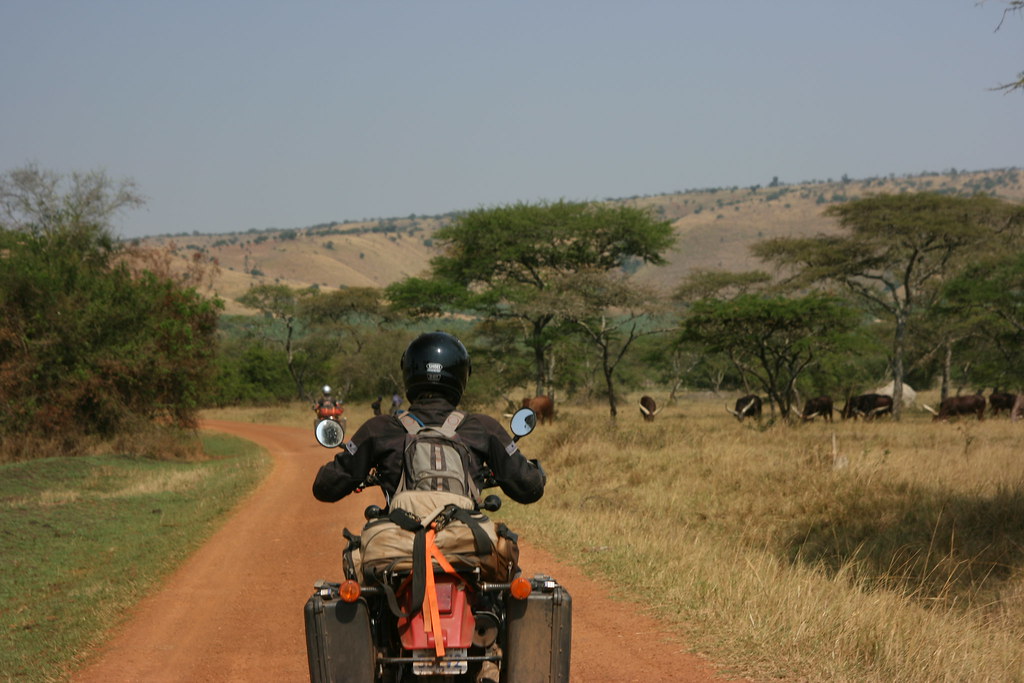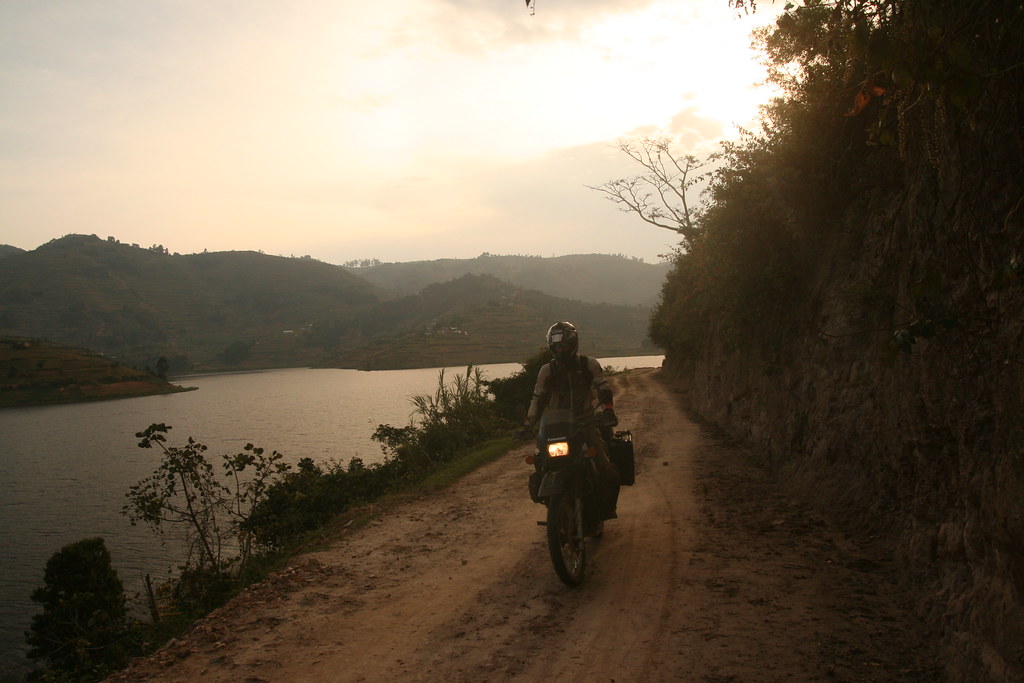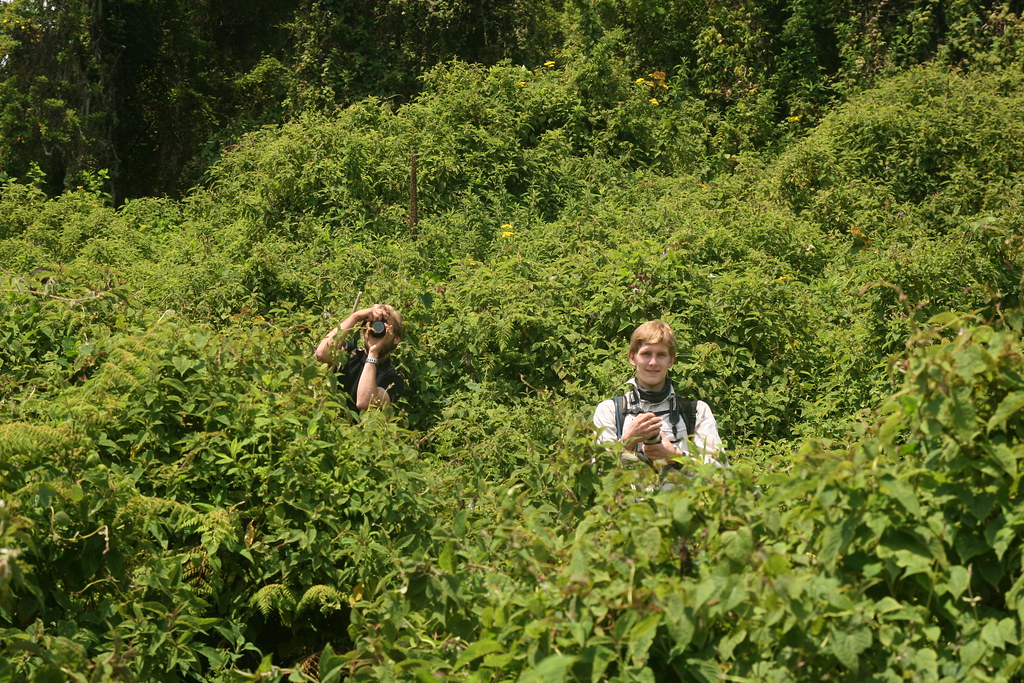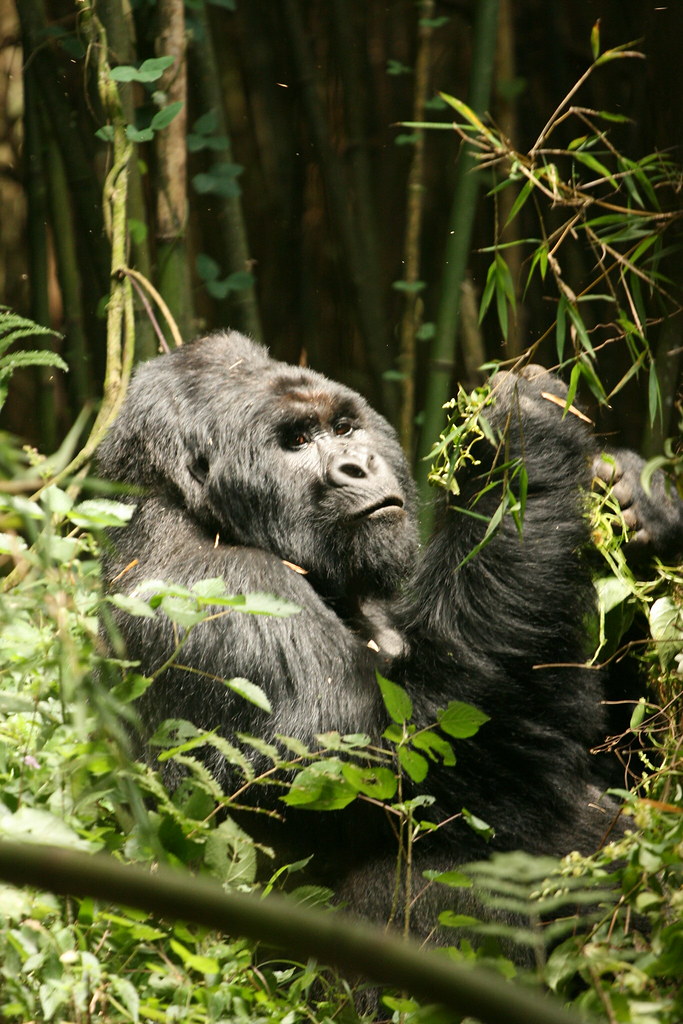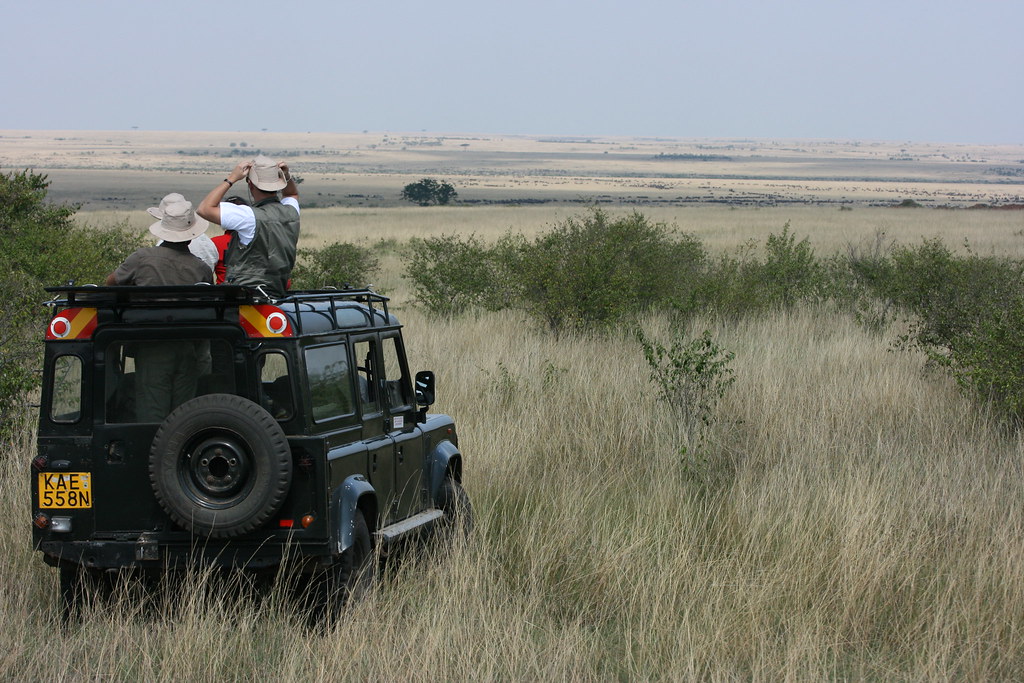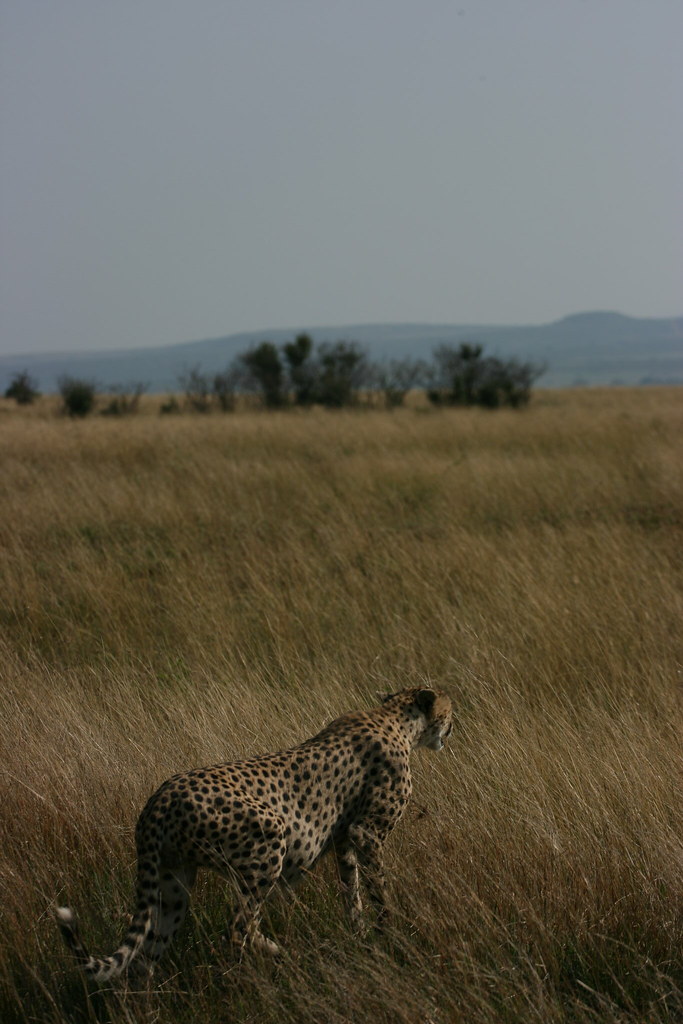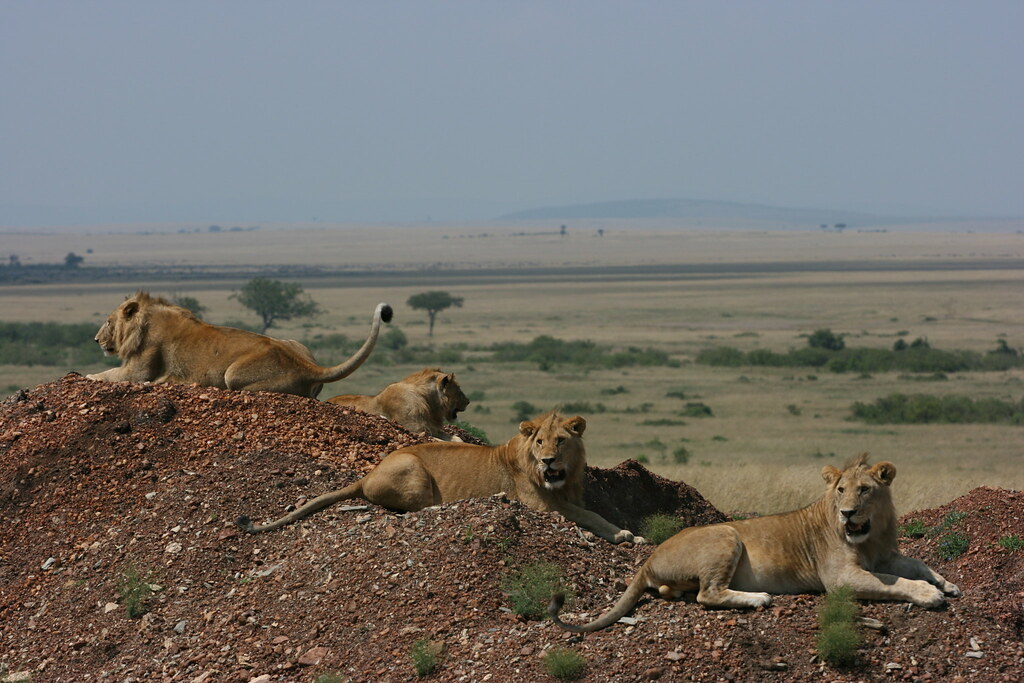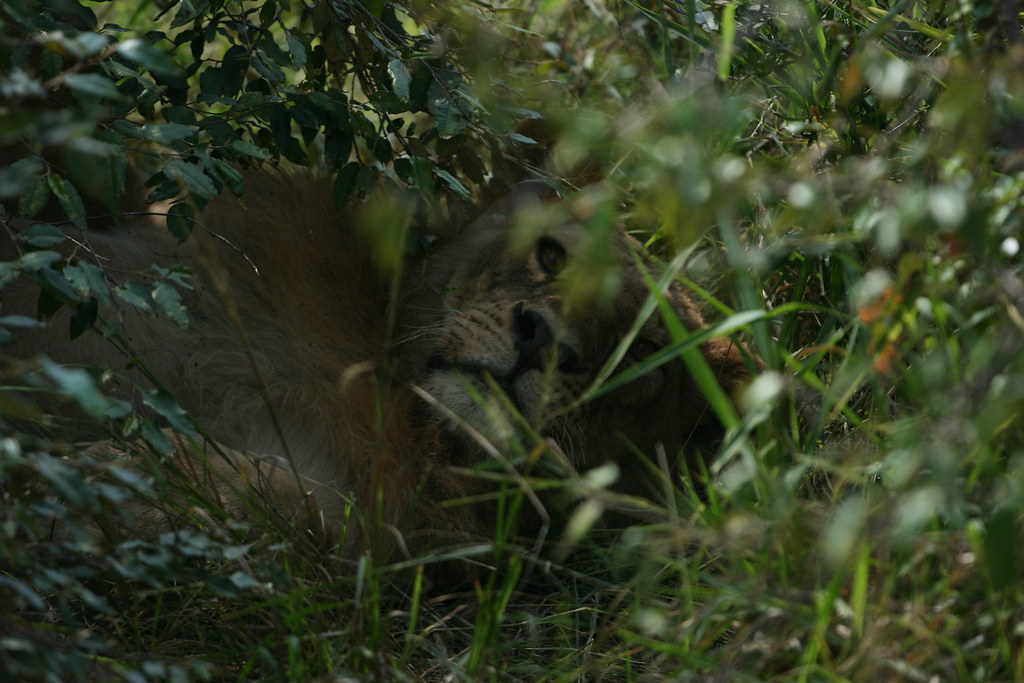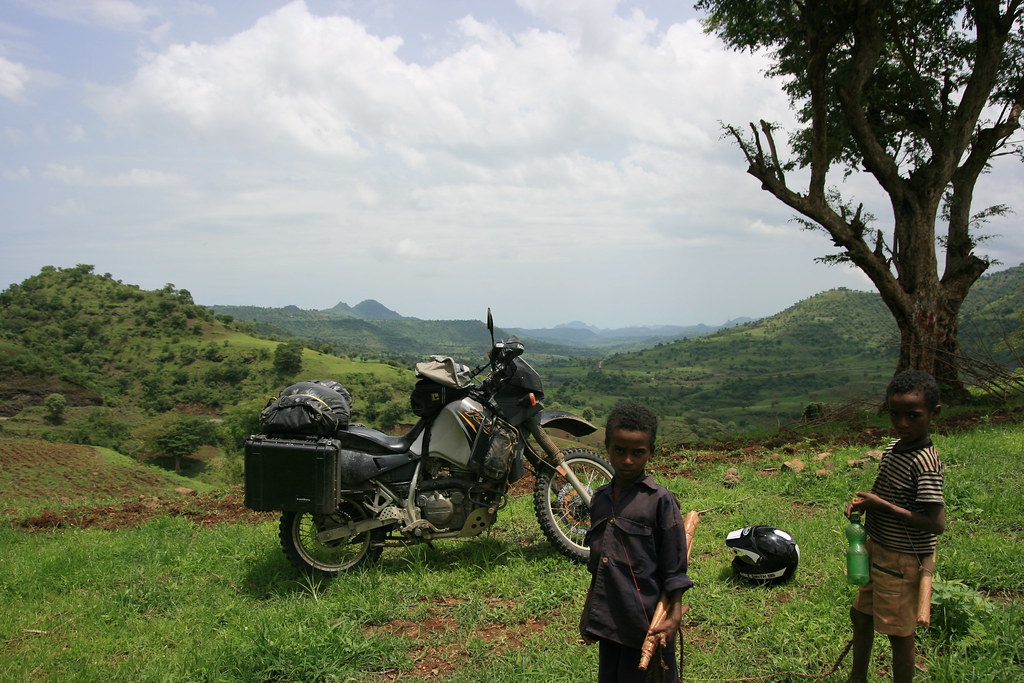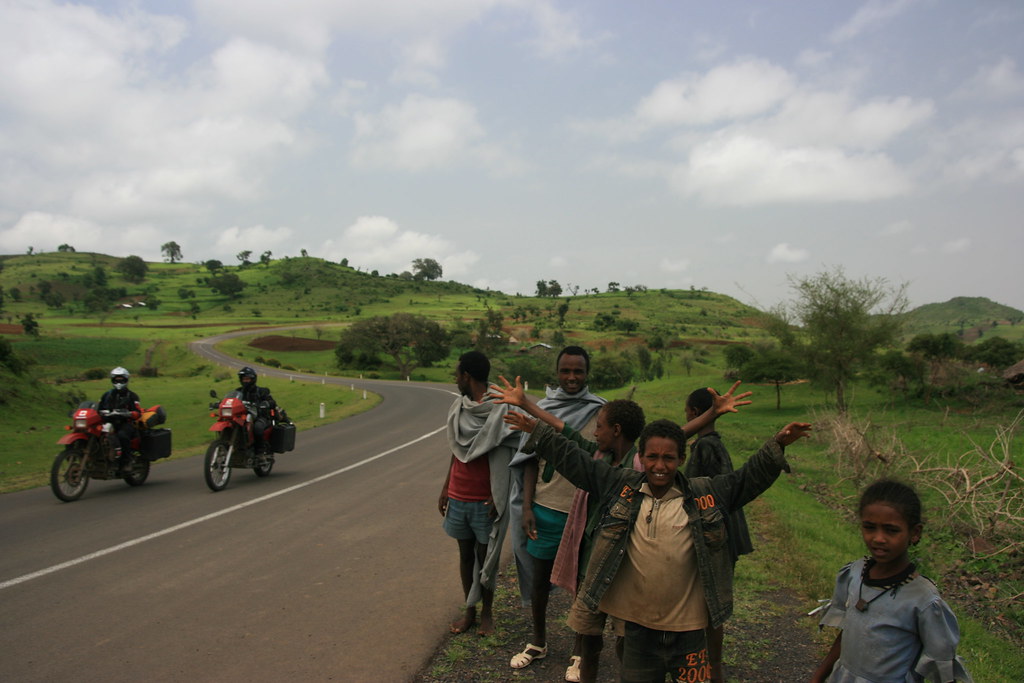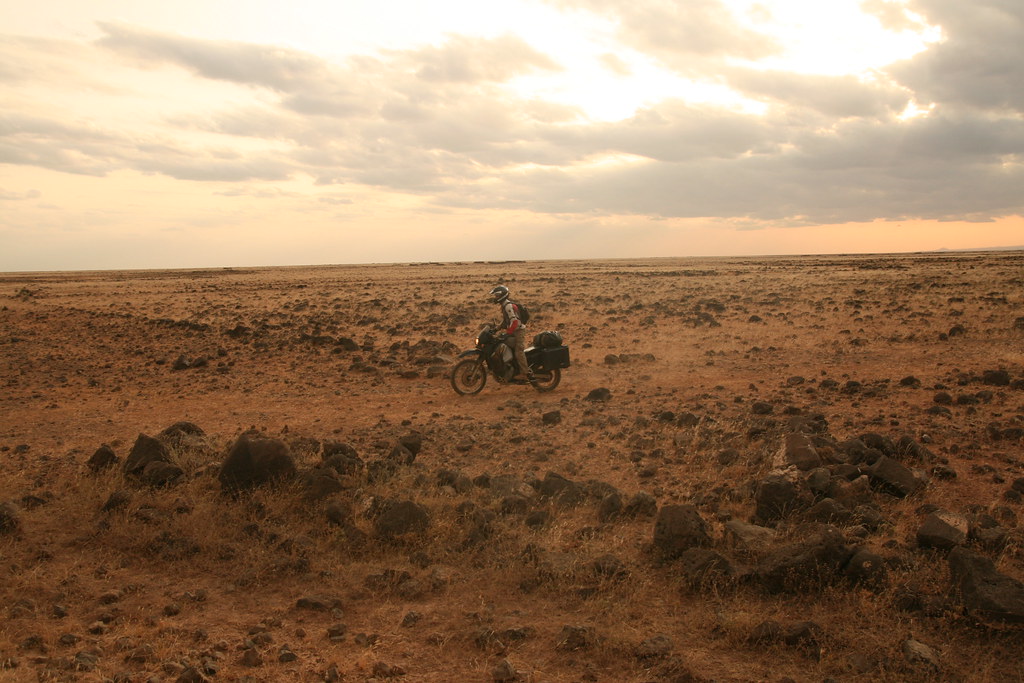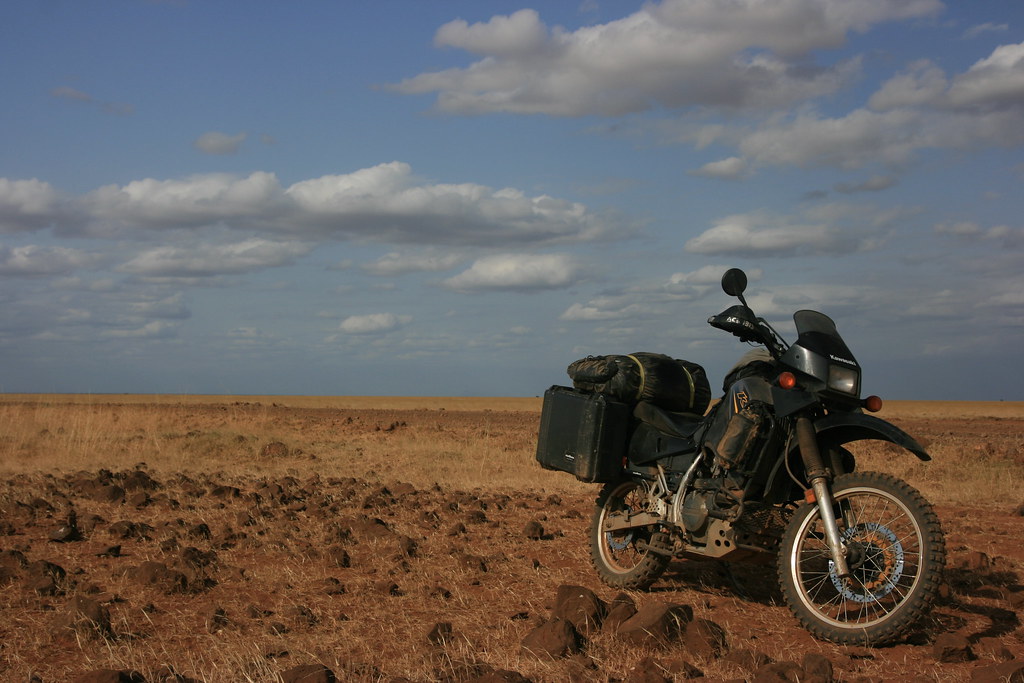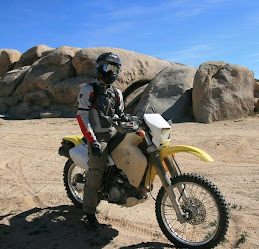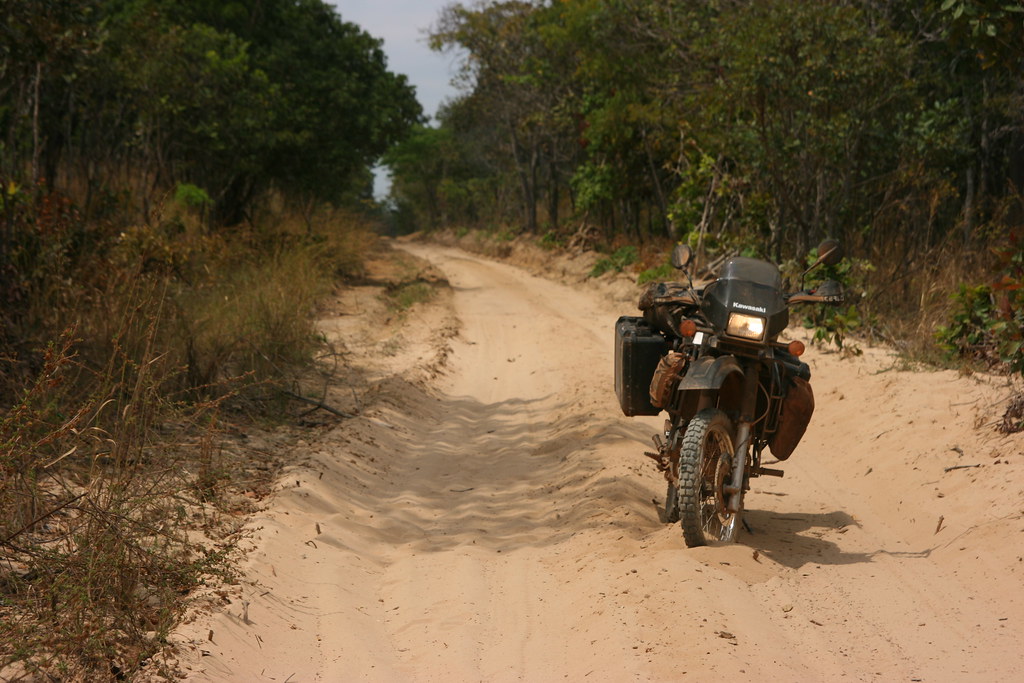
It was the rutts that had Jerry's number. Like a particularly deep bunker, Jerry often found himself in the rutts, and when he did he found it difficult to get out. In the 150 mile stretch to Mpanda he dropped his bike 14 times – seven of which were in a sandy section not more than two miles apart. Par for the course was about three or four drops - at least that's how many times Tyson and I came off anyway.
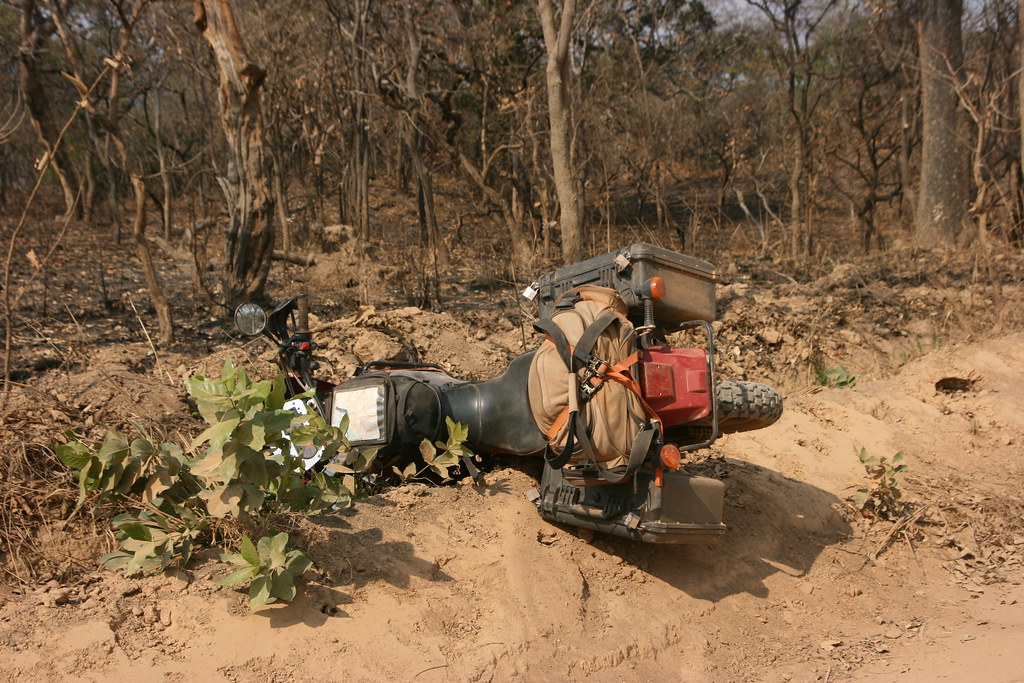
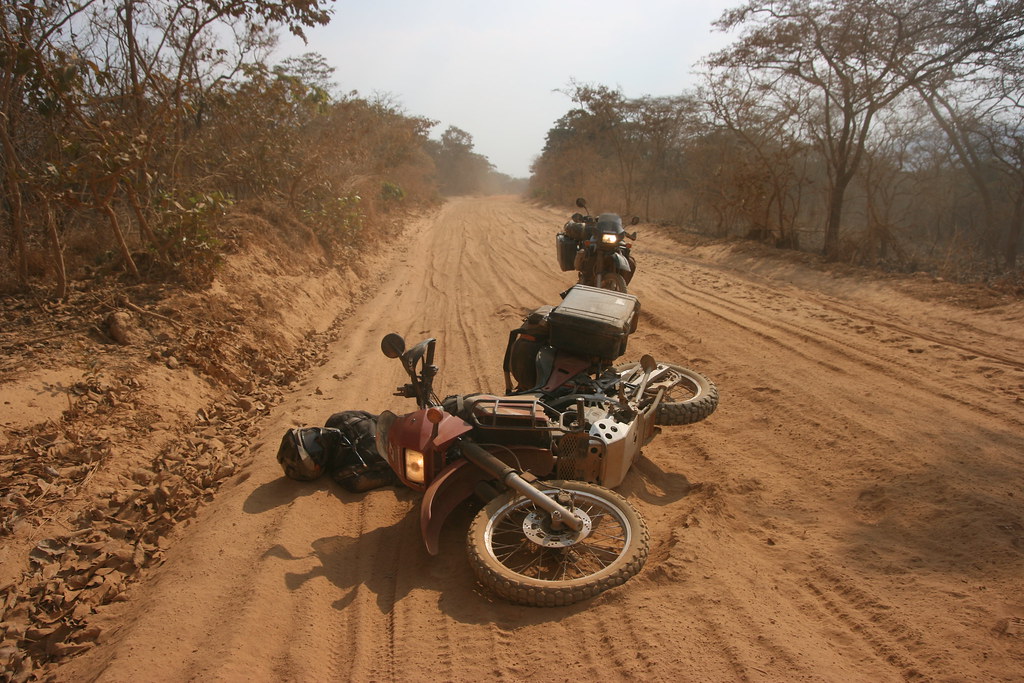
When you get stuck in a mental funk, either playing golf or riding a bike, it's very difficult to pull yourself out. But Jerry shook off the yips and emerged from the road to Mpanda triumphantly - riding the last fifty miles at break neck pace. Despite falling multiple times, both he and Buffy (his bike) seemed unscathed. The same couldn’t be said for Tyson and I though. Tyson, who had gone on ahead to find water, had been forced off the road by an oncoming truck. That spill, or one of his others, resulted in a worryingly large hole in his fuel tank. So with gas pouring onto the ground at an alarming rate, he tore in to Mpanda to get a hasty weld.
As for me, I was riding in the rear gunner position. Riding at the back of the group is a nice place to be. You don’t have to wait around. You’ve always got a bike in front of you as entertainment (just in case the scenery gets dull), and you can muck about without putting the other guys off. But you’re also responsible for picking up anyone who falls over and for looking after yourself.
On a bumpy bit of fesh-fesh I stole a rearward glance at my left hand pannier – the metal rack which holds my case onto the bike had developed another crack and I thought it might have sheared. But taking my eye off the road was a bad move – like looking up in the middle of a golf swing. With my eye off the ball, my front wheel dug into the ground, twisting awkwardly and sending me crashing to the ground. On the way down my foot got caught under the pannier trapping my ankle underneath. I yelled out in pain but no-one was around to hear. I was riding at the back after all.
Fortunately it was only a sprain and I could still ride without too much discomfort. My bike suffered minor injuries too – a bent front fairing, wonky handlebars and a few more scratches to add to the growing collection. Together we limped in to Mpanda just as the sun was setting.
The following day, we did our best to service the bikes and get them back to roadworthy condition. It was late in the afternoon by the time we eventually got going. Despite our late start we had the ambitious goal of making it another 150 miles to Sumbawanga (whoever named the towns in western Tanzania had a sense of humour).
The ride out of town was a pleasant one. Smooth tracks lead us through Katavi National Park and for once I was leading. As I rounded a corner I saw a majestic sight – a lone giraffe standing by the side of the road. She looked at me curiously as I slowed down. Then as I edged closer she dashed into the trees camouflaging herself expertly. Seeing a giraffe run is quite a sight to behold – they gallop in slow motion as if their hooves barely touch the ground. Graceful.
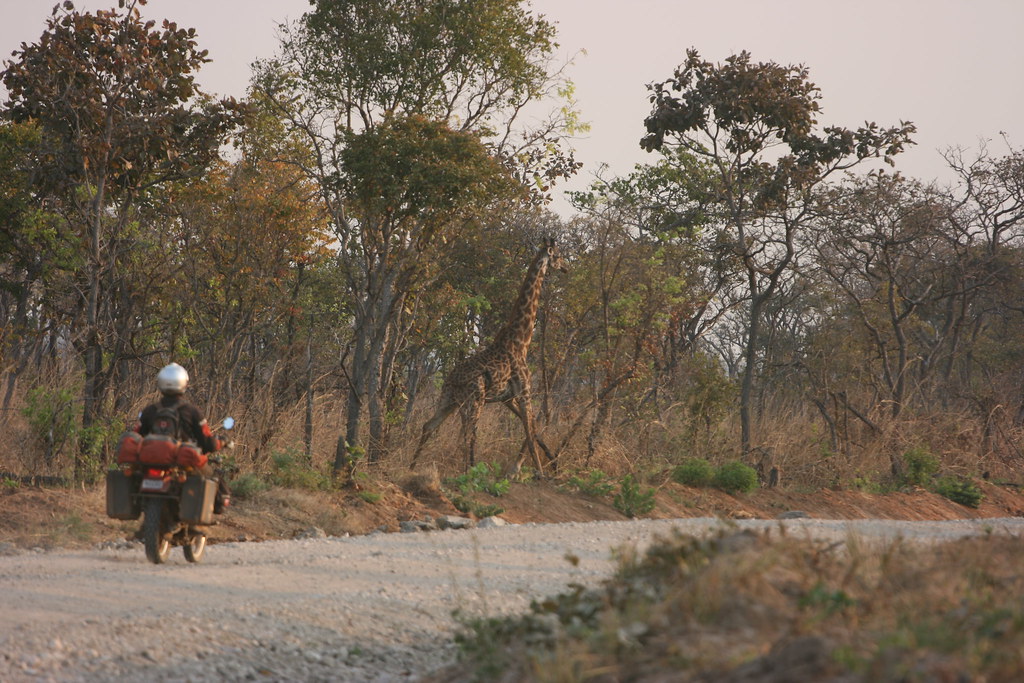
We saw more giraffes as the warm red sun dipped slowly below the horizon. At dusk, we had the option to camp or push on a bit further and make up some miles. The lights on the KLR aren’t the best in the world and you’re always advised against riding at night in Africa. But we pushed on anyway as it was still a long way to Sumbawanga. We got a few miles before it got so dark that I needed to turn on my high beams. But as I flicked the switch all of my lights went out – a classic sign of a blown fuse. Fortunately Tyson was looking in his mirrors and circled back to help out. As we were replacing the fuse, a ranger pulled up to warn us that there were lions around. Our repairs gained a sense of urgency after that. Good thing we didn’t camp.
We pushed on for another 30 miles or so, Tyson and I riding side-by-side, his high-beams lighting the way. As we passed a wildfire we pulled over to wait for Jerry. Half an hour went by before we saw his headlight wobbling slowly towards us. Something was very wrong with his steering. Like an extreme version of the problem I had in Europe (a loose steering bearing). We decided to camp again that night (now safely out of lion territory) and diagnose the problem in the morning.
It was Jerry’s birthday when we woke up, but Buffy hadn’t got a present for him. Far from it. An initial inspection of her steering revealed nothing wrong until Tyson spotted an ominous crack in her frame. I’ve done a lot of research for this trip and read a lot about KLRs, but I’ve never heard of anyone cracking their frame before. This could be a trip ending incident. It’s still a bit of a mystery as to what caused the crack. Jerry hadn’t fallen that day, so the road to Mpanda must have been the culprit. One of his 14 spills must have weakened the frame causing it to slowly crack over the course of the day.

We rode slowly in to Sumbawanga to look for a mechanic. It was Sunday and we figured everything would be closed. But good fortune shone on us again. Not only did we find a mechanic, but we found a competent one. Within three hours he had completely stripped Jerry’s bike, welded the frame (which had cracked in two places – effectively splitting the bike in half) and put the whole thing back together. We decided to celebrate Jerry’s good fortune with a night on the town. But Jerry’s luck didn’t last for long.
The following day on the ride to Tunduma there was another mishap. The roads had gotten a little bumpy again and Jerry was concerned about his frame. So concerned in fact that he didn’t notice one of his panniers fall off. Tyson’s pannier had slipped off his bike three times on the same road but each time he had noticed quickly enough to circle round and pick it up. Everytime a local had already got the case in their hand. On one occasion a car even picked up the case and Tyson had to follow it for two miles before it would relinquish his luggage.
Jerry wasn’t so lucky. He didn’t notice his case was missing for 100km. And, since our cases look exactly like those that drug dealers might use to haul vast quantities of cash around, it’s almost certain that it has been prized open in some Tanzanian village.
There was a bit of cash in the case, but the real expense, and the reason that Jerry is now in Dar es Salaam rather than here with Tyson and I in Malawi, is because all his ID documents were in that case. There have been four occasions when Jerry thought he might have to end his trip early. None of us thought it would be paperwork that would be the final nail in the coffin.
But if you’re thinking that Jerry is the negligent duffer in this story then you’re mistaken. That unfortunate title falls to me. Jerry is well on his way to replacing all his documents and should be continuing south to the Cape before long. The journey on my bike has come to a more abrupt end however.
Since entering Malawi, Tyson and I have been soaring on the smooth blacktop travelling at highway speeds for the first time in a long time. The roads are in excellent condition and a nice reward after the trials of Tanzania.
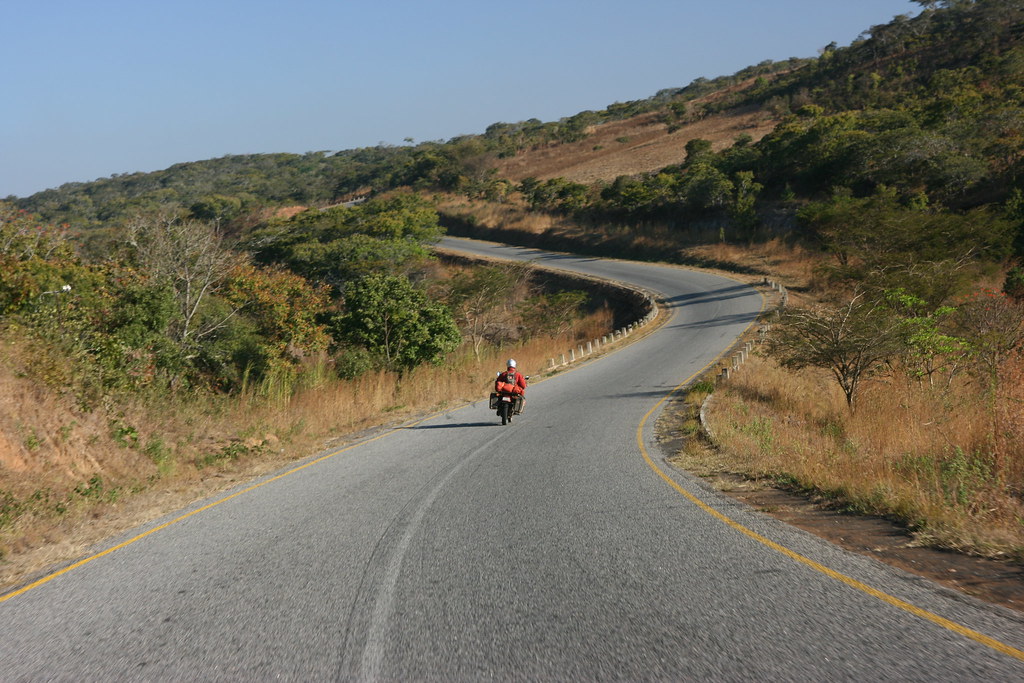
It’s a harsh irony that in such idyllic riding conditions, my bike (The Odyssey) has finally stopped working. And it’s not her fault either, it’s entirely mine.
Bike maintenance is a crucial part of a trip like this. Everyday you check your tyre pressure and your engine oil. But over the past few days I’ve got sloppy with my maintenance. Too preoccupied with my front fork seal, which has been leaking oil since Sumbawanga, and my tyres (which got a puncture shortly after Tunduma) I forgot to check my engine oil. That’s a cardinal sin in the motorcycling world and one that I’ll pay for dearly. Oil is the lifeblood of the engine, and without it things can seize up pretty fast. In normal conditions a bike won’t use much oil and the only way it can get dangerously low is a leak, which is obvious by a thick tarry covering over the engine. But occasionally the engine can use up large quantities of oil unexpectedly. It was one of those unexpected occurrences that happened in Malawi.
Maybe it was because we were riding at over 80mph for the first time in ages. Maybe it was because we covered over 400 miles that day. Whatever the reason, the ride was taxing the engine and burning oil. 50 miles north of Lilongwe it finally conked out. First I thought it was a simple problem – like a worn out spark plug. But when Tyson circled back and asked me how the oil was doing I realised I hadn’t checked it. Glancing down at the oil gauge window, I saw nothing there. Even when the bike was fully tilted over there was no sign of the black stuff anywhere.
With my bike going nowhere, and Tyson’s electrical problems back, we both had to load our bikes onto a truck to take us the final 50 miles to Lilongwe. And that’s where we’ve been for the past few days. Tyson’s electrics are fixed, but unfortunately the problems with my bike are terminal. The lack of oil in the engine has damaged the camshaft and the cam-seat has worn out. That makes riding impossible, and with spare parts and tools thin on the ground out here, that means my bike will have to be trucked to the nearest Kawasaki dealer which is in Johannesburg. A sorry way for The Odyssey to finally come to an end – 17365km from London.
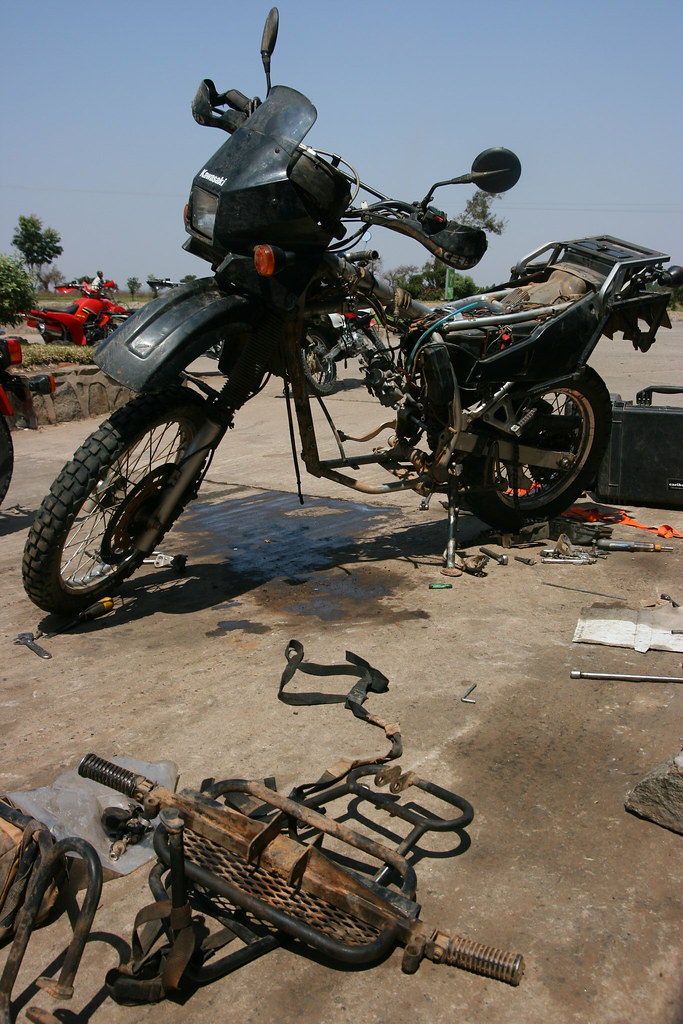
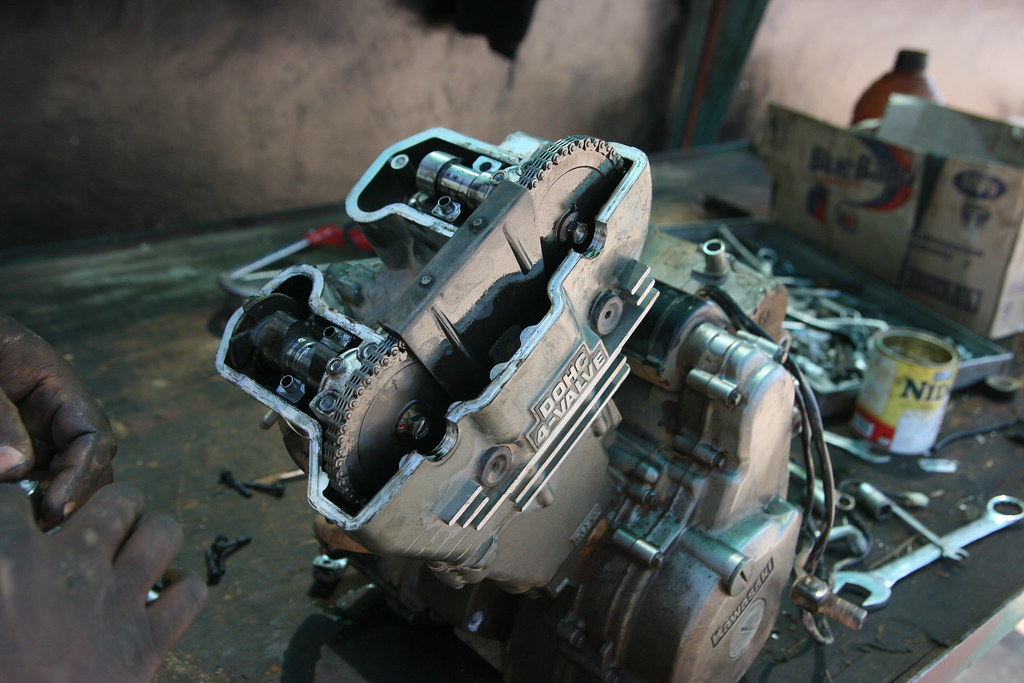
So what now for this silly duffer? Well. Tyson has kindly agreed to give me a lift to Johannesburg on his beloved bike - Rosa. Two-up is not the most fun way to travel, so we’ll be keeping a close look out for cheap local bikes. Maybe I’ll be able to snag myself a red devil, just like Claudio, the cameraman who wrote-off his bike on the Long Way Round. Either way, it certainly beats a bus.
Perhaps it’s a fitting way for Rosa to finish the journey as well. Tyson named her after La Poderosa (‘The Mighty One’) – the bike that Che Guevara and Alberto Granado rode two-up on their adventure in the Motorcycle Diaries. If she carries us all the way to Johannesburg she certainly will have earned her name.
